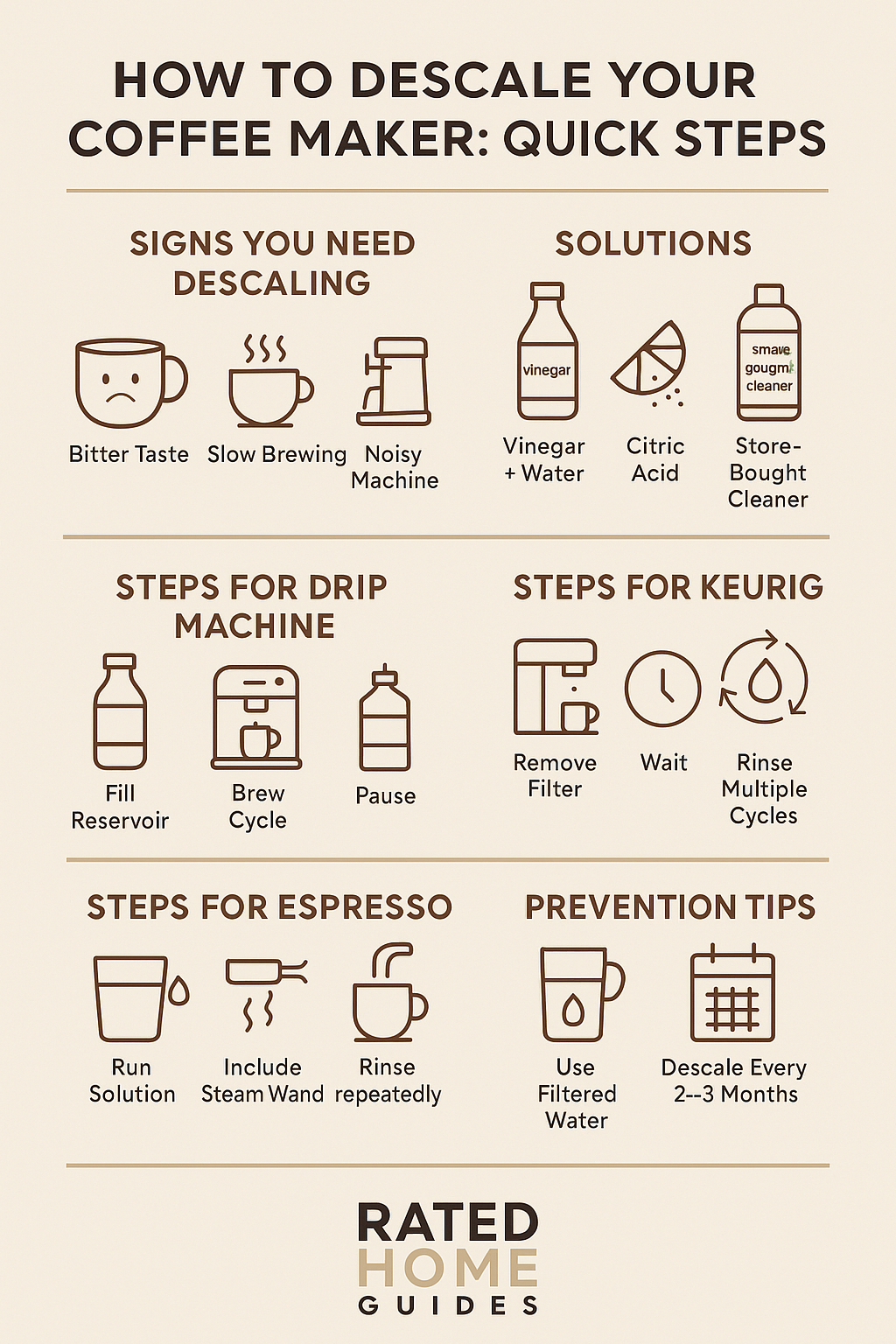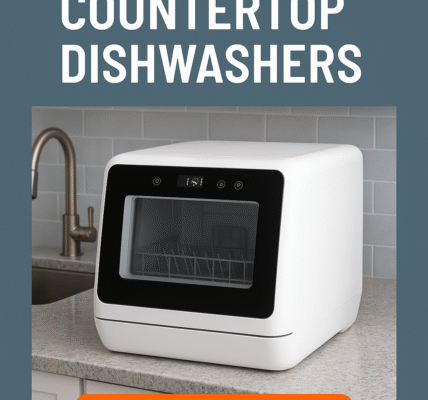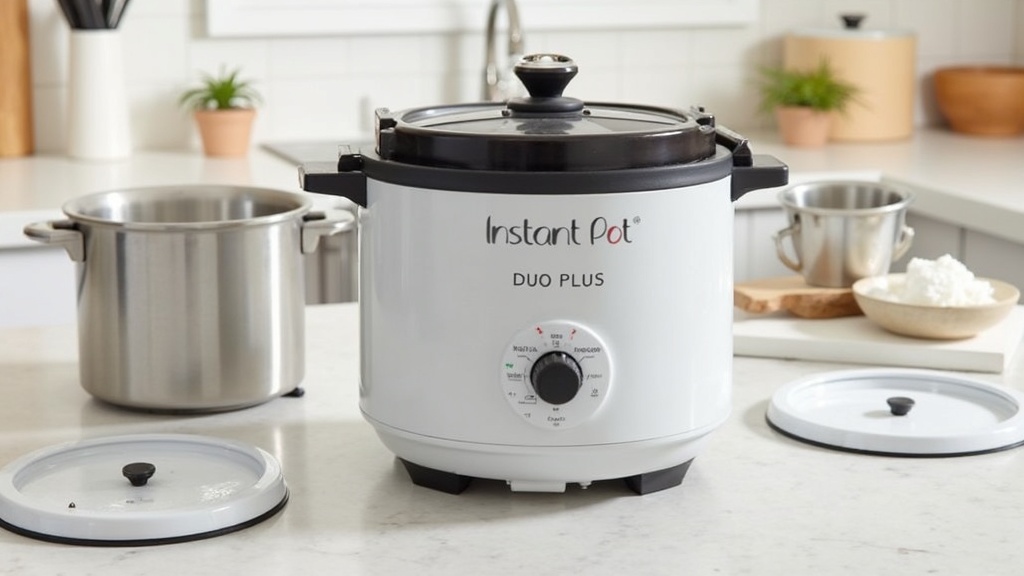Descaling your coffee maker is one of the most important maintenance tasks you can do to keep it running smoothly and producing fresh, flavorful coffee. Over time, mineral deposits from water build up inside your machine, affecting taste and performance. If left untreated, this buildup can clog your machine, shorten its lifespan, and even cause it to stop brewing altogether. The good news is that with regular descaling, you can protect your investment and enjoy better coffee every day.
1. What Is Descaling and Why It’s Important
Descaling is the process of removing mineral deposits, often called limescale, that collect inside coffee makers over time. These minerals come from tap water and can accumulate quickly if you use hard water. Limescale not only affects the taste of your coffee but can also damage heating elements and reduce efficiency. Understanding descaling helps you see why it should be part of your regular coffee maker maintenance.
2. Signs Your Coffee Maker Needs Descaling
You may notice your coffee tasting bitter, weak, or “off” even when using the same beans. Another common sign is when your coffee maker takes longer to brew than usual. Sometimes, the machine may make more noise or struggle to heat water properly. These are strong indicators that it’s time to run a descaling cycle before bigger problems occur.
3. How Often Should You Descale Your Coffee Maker?
The frequency of descaling depends on how often you use your coffee maker and the type of water in your home. For most households, descaling every 2 to 3 months is recommended. If you use hard water or brew daily, you may need to descale more frequently. Setting a reminder can help ensure your machine stays clean and functional.
4. Descaling Solutions: Store-Bought vs. DIY
Many brands sell descaling solutions specifically formulated for coffee makers. These are effective and safe but can become costly with regular use. Alternatively, you can make a DIY solution with vinegar or citric acid for a more affordable option. Both methods are effective, and the best choice often depends on personal preference and machine manufacturer recommendations.
5. Step-by-Step: Descaling a Drip Coffee Maker
Start by filling the water reservoir with equal parts vinegar and water. Run a brewing cycle without coffee, allowing the solution to flow through the system. Pause halfway through and let it sit for 30 minutes to break down buildup. Finally, run two to three full cycles of plain water to rinse away any remaining vinegar.
6. Step-by-Step: Descaling a Keurig Coffee Maker
First, remove the water filter from your Keurig reservoir. Fill the tank with a descaling solution or vinegar mixture, then run several brew cycles without inserting a K-cup. Let the machine sit for 30 minutes mid-cycle to allow deeper cleaning. Finish by flushing the system with multiple rinses of fresh water until the vinegar smell is gone.
7. Step-by-Step: Descaling an Espresso Machine
Espresso machines require a bit more care because of their pressurized brewing system. Begin by mixing a descaling solution and adding it to the water tank. Run the solution through the machine, including the steam wand, to remove buildup in multiple areas. Rinse thoroughly with fresh water, repeating the cycle until the taste and smell are neutral.
8. Common Mistakes to Avoid While Descaling
One mistake is skipping the rinse cycles, which can leave vinegar or cleaner residue in your coffee. Another is using the wrong solution for your machine, which could damage components. Some people forget to clean detachable parts like filters and carafes during descaling. Avoiding these mistakes ensures a safer and more effective cleaning.
9. How Descaling Extends the Life of Your Coffee Maker
Regular descaling reduces strain on heating elements and pumps. A clean machine heats water more efficiently, which saves energy and time. It also prevents clogging that could otherwise require expensive repairs. By keeping your coffee maker scale-free, you can enjoy many more years of reliable use.
10. Natural Alternatives to Commercial Descaling Products
Vinegar is the most common household alternative for descaling. Lemon juice and citric acid are also effective, with a fresher scent. These natural methods are affordable, easy to find, and safe for most machines. However, always check your manufacturer’s guidelines to ensure these options won’t void your warranty.
11. Preventing Scale Buildup Between Descaling
Using filtered or bottled water can drastically reduce scale buildup. Emptying and drying the reservoir when not in use also helps. Another tip is to run a quick rinse cycle daily to prevent minerals from settling. Taking these small steps reduces the need for frequent deep cleaning.
12. Final Thoughts: Enjoy Fresh Coffee Every Time
Descaling your coffee maker is a simple but powerful way to maintain performance. Whether you own a drip brewer, Keurig, or espresso machine, the process ensures your coffee tastes better and your machine lasts longer. Regular care also prevents costly repairs and downtime. With consistent maintenance, every cup you brew will be rich, flavorful, and satisfying.


